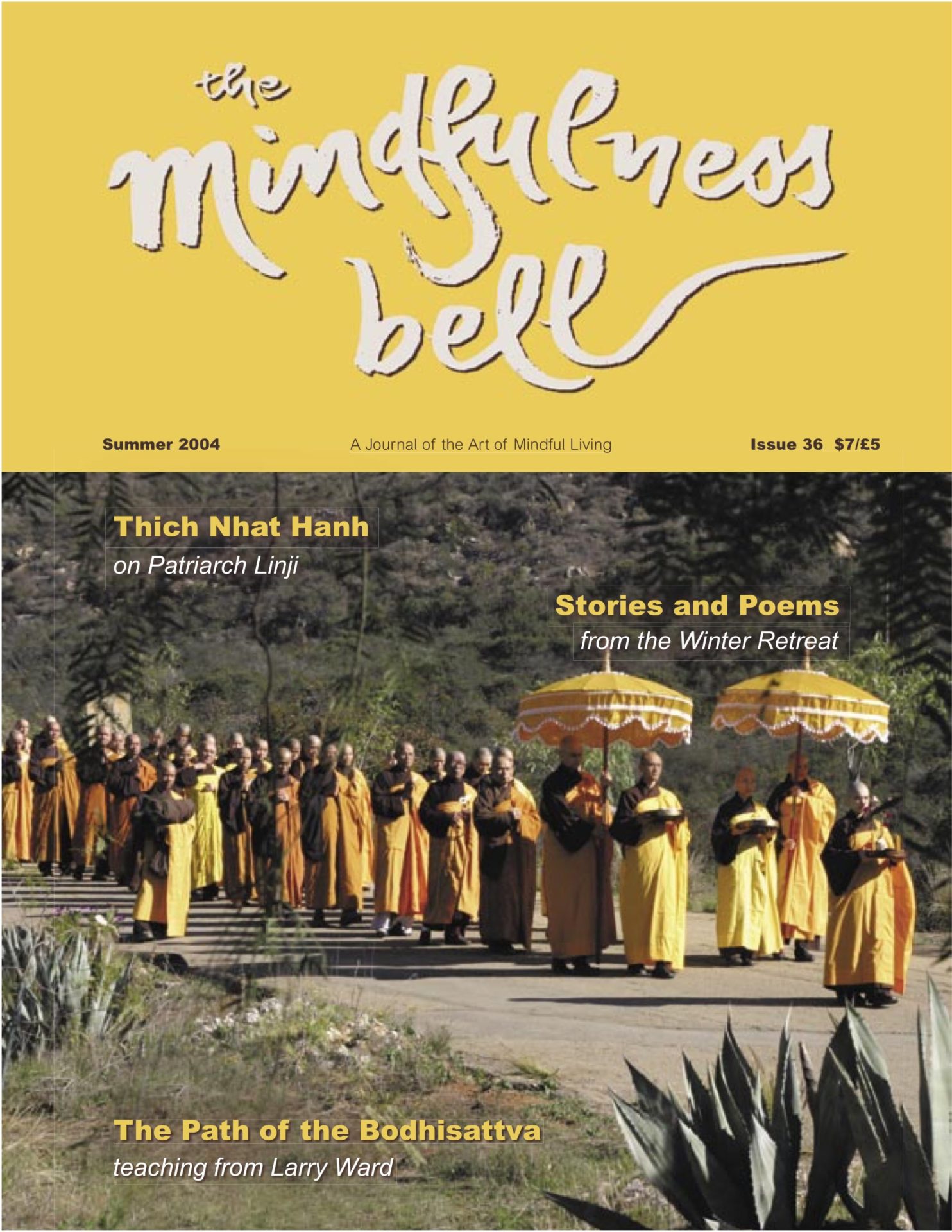
To Our Readers
The Invitation ceremony has concluded the three-month winter retreat in Deer Park Monastery. Members of the Fourfold Sangha are sitting on the beach with nowhere to go, nothing to do; enough to make us very happy. During the three months of the retreat, the Fourfold Sangha has practiced the happiness of arriving in the present moment, with nothing else to attain.
This is the cream of the teachings of Patriarch Linji,

To Our Readers
The Invitation ceremony has concluded the three-month winter retreat in Deer Park Monastery. Members of the Fourfold Sangha are sitting on the beach with nowhere to go, nothing to do; enough to make us very happy. During the three months of the retreat, the Fourfold Sangha has practiced the happiness of arriving in the present moment, with nothing else to attain.
This is the cream of the teachings of Patriarch Linji, who lived in the ninth century in China. The Patriarch’s teachings were brought to Vietnam in two waves; one in the thirteenth century and one in the eighteenth century. From Vietnam they have been brought to Europe and North America by Thich Nhat Hanh, who is a descendant of the forty-second generation of the Linji line. The spirit of these teachings lives on in the Dharma Doors of Plum Village. You will be able to read in this issue a transcript of a Dharma talk given by Thay on the essence of the teachings of Patriarch Linji.
The Wednesday morning teachings offered by Thay during the retreat were on the Records of Master Linji. Thay gave additional teachings on Wednesday and Sunday mornings to the Fourfold Sangha. In addition, there was the uninterrupted practice of mindful walking and breathing, when we are sitting, standing, lying, working, and eating. The teachings have always been very practical and the Sangha has been able to put them into practice without delay. Thanks to this, everyone who has participated in the retreat has realized some healing and transformation. In this issue you will be able to read about some of the practical fruits of the practice of the Winter Retreat.
We know that Buddhism is a living reality and not an artifact to be preserved in a museum. The teachings that have come from Asia need to be integrated into the Western way of life. It is encouraging, therefore, to see how local Sanghas in North America have been adapting traditional Buddhist ceremonies to fit the needs of the practitioners in their Sanghas. Two examples can be read about in this issue: the Father’s Day Ceremony and the ceremony for introducing to the Sangha and naming newborn children.
Sister True Virtue

